Ratunda pepper variety
Recently, a huge number of various varieties and hybrids of sweet (Bulgarian) pepper have appeared on sale, which sometimes even an experienced gardener finds it difficult to make a choice. But today we will consider only one variety, loved by many, Ratunda, popularly called Gogoshary because of the peculiar structure of the fruit, divided into slices. According to scientific classification, it is tomato-shaped pepper. Currently, there are different color varieties of Ratunda, but the most popular are red and dark red.

Photo: Stavrunova Lyubov, Yeysk
Description of the variety
This is a compact, low-growing plant with a height of 40-60 cm. The growing season is average, the fruits usually ripen 120-130 days after the first shoots appear. Peppers have different shapes, but the hallmark of this variety is a flattened or flat shape with a large number of slices, which very much resembles a pumpkin. The plant usually sets up to 11-13 fruits. The output of pepper from one square meter can reach up to 7 kg, provided there is good illumination and slight thickening by plants. The fruits have a sweet taste with a hint of honey, very juicy and fleshy, there is no bitterness, but there is a slight (delicate) pungency, almost imperceptible. The wall thickness can be up to 6 mm. Fruits can be harvested both in technical ripeness - green with a dark shade, and in biological ripeness - red with a dark spot. You can use them fresh, rolled and dried. The average fruit weight is up to 180 grams. Another distinctive feature of the variety is the long shelf life of peppers without losing their taste and shape. Fruits in technical ripeness are easily ripened.
Growing Ratunda pepper
Usually the seeds germinate up to three weeks, but to accelerate their germination, they must be treated with a weak solution of potassium permanganate or copper sulfate for 20-30 minutes, and then soaked between two sheets of tissue in an Epin solution (growth stimulator) with several crystals of potassium nitrate (potassium nitrate) during the day. Then the seeds are planted in small containers with specially prepared soil (2 parts of peat, 1 part of sand), two pieces each and placed in a plastic bag to create the desired microclimate, the temperature should be at least 20 degrees. Once every two days, the containers must be ventilated and watched so that the ground is moist.
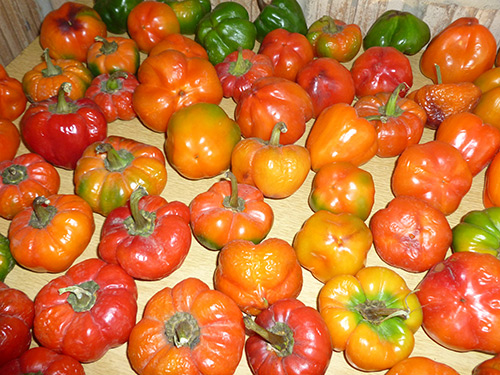
Photo: Stavrunova Lyubov, Yeysk
After the first shoots appear, it is advisable not to remove the film for another week, but to ventilate it every day. When the first true leaves appear in plants, you need to carry out the first feeding with superphosphate. When the seedlings have 5-7 leaves, they can be dived into a larger container. You should also not forget about watering and feeding with minerals, which should be carried out every three weeks.
Usually in mid or late May, seedlings can be planted in a permanent place in a greenhouse, as well as in open ground, provided that the climate in your area allows it. It is advisable to plant up to six plants per square meter. To increase the yield, the first flower at the fork is removed, as are all the leaves before the fork. In the flowering phase, Ratunda pepper must be treated with a 1% solution of boric acid to increase the number of ovaries and fed with potassium fertilizers. To obtain large fruits, from the already set 8-12 pieces, it is necessary to cut off the flowering tops and remove all small stepsons from the plant. Once a month it is necessary to carry out foliar dressing with 1% solutions of microelements. To prevent the appearance of diseases, pepper must be treated with fungicidal agents once or twice during the growing season - Hom, Ridomil
Harvesting and storage
For long-term storage, Ratunda pepper should be collected in technical ripeness, but ripe fruits can be stored for more than a month. The peppers must not be damaged during collection, otherwise they will have to be used immediately for food or processing. From the largest and fully ripe fruits, you can use the seeds for further cultivation of this variety.
So, following the above instructions, anyone, even a beginner in the cultivation of peppers, can easily grow the Ratunda variety and get a large harvest of beautiful and tasty fruits.

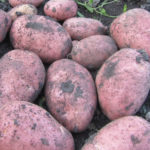
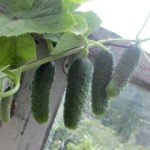

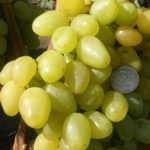
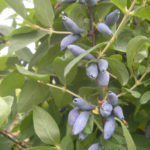



Ratunda is the most favorite variety. I plant seeds at the beginning of February, at the end of July I collect the first crop. Doesn't like picking. Fleshy pepper, thick-skinned, the larger the fruit, the thicker the walls. Ratunda fruits are juicier and sweeter than other varieties. There are specimens with streaks of bitterness. So there was a cross-pollination with hot pepper. Every other day I water the aisle abundantly. I will definitely tie it up. I harvest once a week, and after the first frost I cut off the whole. It is a pity to pull out the plants, there are still many small fruits on them and they are blooming with might and main. Store in a cool place where they ripen, changing color from green to orange and red. In the photo, peppers cut on October 18.
Also one of my favorite peppers, I usually plant a dozen bushes. I am very glad that this is a rapidly ripening variety, usually at the end of July it is already possible to harvest technically mature fruits. I do not break off the flowering tops, the pepper has enough time for the growth of the main ovaries and for their full ripening, and many fruits are tied on the tops by the end of autumn. They are certainly not 180 g, but 50-100 g for sure, some are even starting to mature. The pepper is excellent and fruitful, and the main thing is that a small bush grows, I did not notice diseases on it, but the aphid likes to settle on the leaves, its soul is chemistry. The fruits are very sweet and keep well.